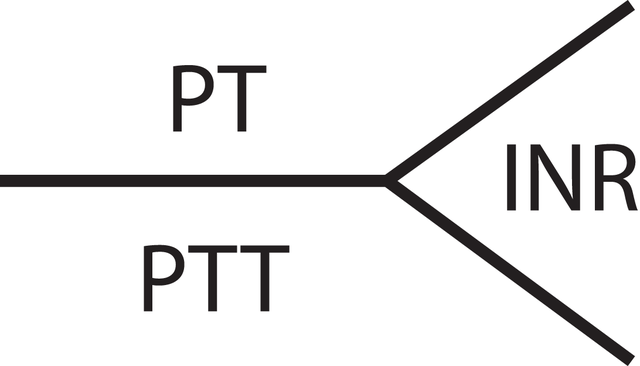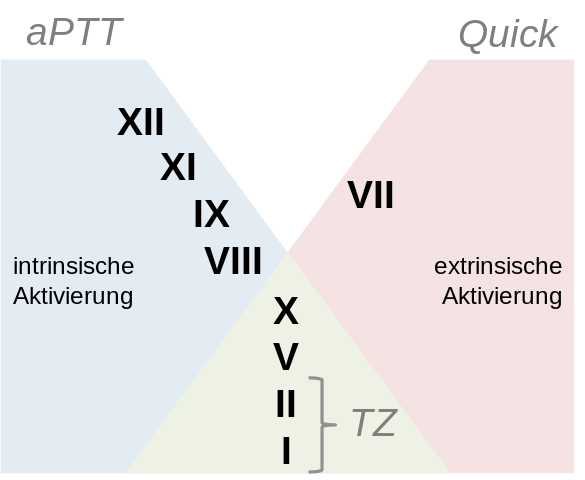Difference Between PTT and APTT
What are PTT and APTT?
PTT (Partial Thromboplastin Time) and APTT (Activated Partial Thromboplastin Time) are two medical tests which are used to represent and characterize blood coagulation. Both PTT (Partial Thromboplastin Time) and APTT (Activated Partial Thromboplastin Time) use partial prothrombin, a phospholipid and Both aPTT and PTT are beneficial in the diagnosis of bleeding disorders and blood coagulation problems.
The major difference between APTT (Activated Partial Thromboplastin Time) and PTT (Partial Thromboplastin Time) is that an activator is added to APTT test to elevate the speed of the clotting time and to get results in a narrower reference range while no activator is added to a normal PTT test and so PTT is less sensitive to heparin therapy as compared to APTT.

What is PTT?
PTT (Partial Thromboplastin Time) is known as a medical test conducted to evaluate the time taken for the blood to clot. This test helps to diagnose bleeding disorders. During this test, the integrity of the intrinsic system and the common pathway is assessed by means of factors VIII, IX, XI, and XII. The elevated levels of PTT signify a missing or defective clotting factor.
The partial Thromboplastin Time (PTT) is used in conjunction with another test that investigates the time taken by the blood to clot and the test is called the PT test (Prothrombin Time). The PT test measures the speed of blood clotting by use of the extrinsic pathway (also called as the tissue factor pathway). The test is conducted on an automated instrument at 37 °C.
A test tube containing oxalate or citrate is used for the collection of blood for PTT test. The methodology used to conduct the test is same as in APTT, but in this test an activator is not used. Hence, the time taken for this test is longer than the APTT test.

What is APTT?
Kaolin Cephalin Clotting Time (KCCT) is the historic name for the Activated Partial Thromboplastin Time. APTT (Activated Partial Thromboplastin Time) is a medical test of blood coagulation used to investigate the clotting factors of the intrinsic pathway. The major reason of the APTT test is to do screening of bleeding capacities and to monitor patients on heparin therapy.
This test has replaced the older version of PTT test. APTT is considered as a more sensitive version of the PTT test. The deficiencies of the coagulation factors like Factors V, VIII, IX, X, XI, and XII elevates the APTT (Activated Partial Thromboplastin Time). Decalcified blood is used for the APTT (Activated Partial Thromboplastin Time) test. An activator is used in this test to make the clot faster. The normal APTT (Activated Partial Thromboplastin Time) value is 35 seconds.
Difference between PTT and APTT
-
Definition
PTT
PTT is the best single screening test conducted to assess coagulation disorders.
APTT
It is same as PTT, but measures effectiveness of Heparin (more specific than Partial Thromboplastin Time).
-
Sensitivity to Heparin
PTT
Heparin, an anticoagulant prolongs a Partial Thromboplastin Time (PTT), either as a contaminant of the sample or as part of the anticoagulation therapy. PTT is less sensitive to heparin
APTT
Activated partial thromboplastin time (APTT) is more sensitive to heparin.
-
Function
PTT
The Partial Thromboplastin Time is used primarily to probe unexplained bleeding or clotting. It may be conducted along with a prothrombin time (PT) test to assess and investigate haemostasis, the method that the body makes use of to manufacture blood clots to control and stop bleeding.
APTT
The Activated partial thromboplastin time (APTT) is a common medical screening test conducted to investigate function of the intrinsic clotting system and bleeding disorders. It has largely replaced the older Partial Thromboplastin Time (PTT), which was not able to incorporate variables in surface/contact time. APTT also evaluates heparin therapy.
-
Significance
PTT
The Partial Thromboplastin Time (PTT) evaluates the amount and the performance of several proteins called coagulation factors which are significant part of blood clot formation. The PTT screening test helps to assess a person’s ability to appropriately develop blood clots. The Partial Thromboplastin Time (PTT) does not use an activator.
APTT
The Activated partial thromboplastin time (APTT) investigates factors I (fibrinogen), II (prothrombin), V, VIII, IX, X, XI and XII. When the Activated partial thromboplastin time (APTT) test is conducted in concurrence with prothrombin time (PT) test, that is used to assess the extrinsic and common pathways of the blood coagulation cascade, a clarity and further classification of coagulation disorders is obtained.
-
Type of clotting factors
PTT
The Partial Thromboplastin Time (PTT) measures factors such as VIII, IX, X, and XII.
APTT
The Activated partial thromboplastin time (APTT) measures factors such as V, VIII, IX, X, XI, and XII.
-
Narrowing the reference range
PTT
In the Partial Thromboplastin Time (PTT), the reference range is the regular timing of blood clotting.
APTT
In the Activated partial thromboplastin time (APTT), the reference range is narrowed by adding an activator.
-
Reference range
PTT
60-70 seconds
APTT
30-40 seconds
The points of difference between PTT and APTT have been summarized below:
PTT Vs. APTT: Comparison

- Difference Between Global Warming and Greenhouse Effect - May 18, 2024
- Difference Between Vaccination and Immunization - March 3, 2024
- Difference Between Selective Mutism and Autism - February 25, 2024
Search DifferenceBetween.net :
 Email This Post
: If you like this article or our site. Please spread the word. Share it with your friends/family.
Email This Post
: If you like this article or our site. Please spread the word. Share it with your friends/family.
2 Comments
Leave a Response
References :
[0]Bain, B., Forster, T., & Sleigh, B. (1980). Heparin and the activated partial thromboplastin time—a difference between the in-vitro and in-vivo effects and implications for the therapeutic range. American journal of clinical pathology, 74(5), 668-673.
[1]Capoor, M. N., Stonemetz, J. L., Baird, J. C., Ahmed, F. S., Awan, A., Birkenmaier, C., ... & Naqvi, S. (2015). Prothrombin time and activated partial thromboplastin time testing: a comparative effectiveness study in a million-patient sample. PloS one, 10(8), e0133317.
[2]Nnenna Adaeze, N., Uchenna Emeribe, A., Abdullahi Nasiru, I., Babayo, A., & Uko, E. K. (2014). Evaluation of prothrombin time and activated partial thromboplastin time in hypertensive patients attending a tertiary hospital in Calabar, Nigeria. Advances in hematology, 2014.
[3]Image credit: https://upload.wikimedia.org/wikipedia/commons/thumb/6/60/Vergleich_Gerinnungstest_aPTT_Quick_TZ_mit_Faktoren.svg/585px-Vergleich_Gerinnungstest_aPTT_Quick_TZ_mit_Faktoren.svg.png
[4]Image credit: https://upload.wikimedia.org/wikipedia/commons/thumb/c/c2/Coagulation_diagram.png/640px-Coagulation_diagram.png


Aug/25/2018
Thank you so much for all kinds of information regarding:
difference between terms and objects ,it is the best reference examples up on scientific knowledge and reports that are used is my every day research project works .
But this one is also very useful in medical science and every day care for patients who had undergone heart surgery that is to be known more about its importance.
Best regards
Hossein Marmaladeh
It is very helpful for MLT students thanks.